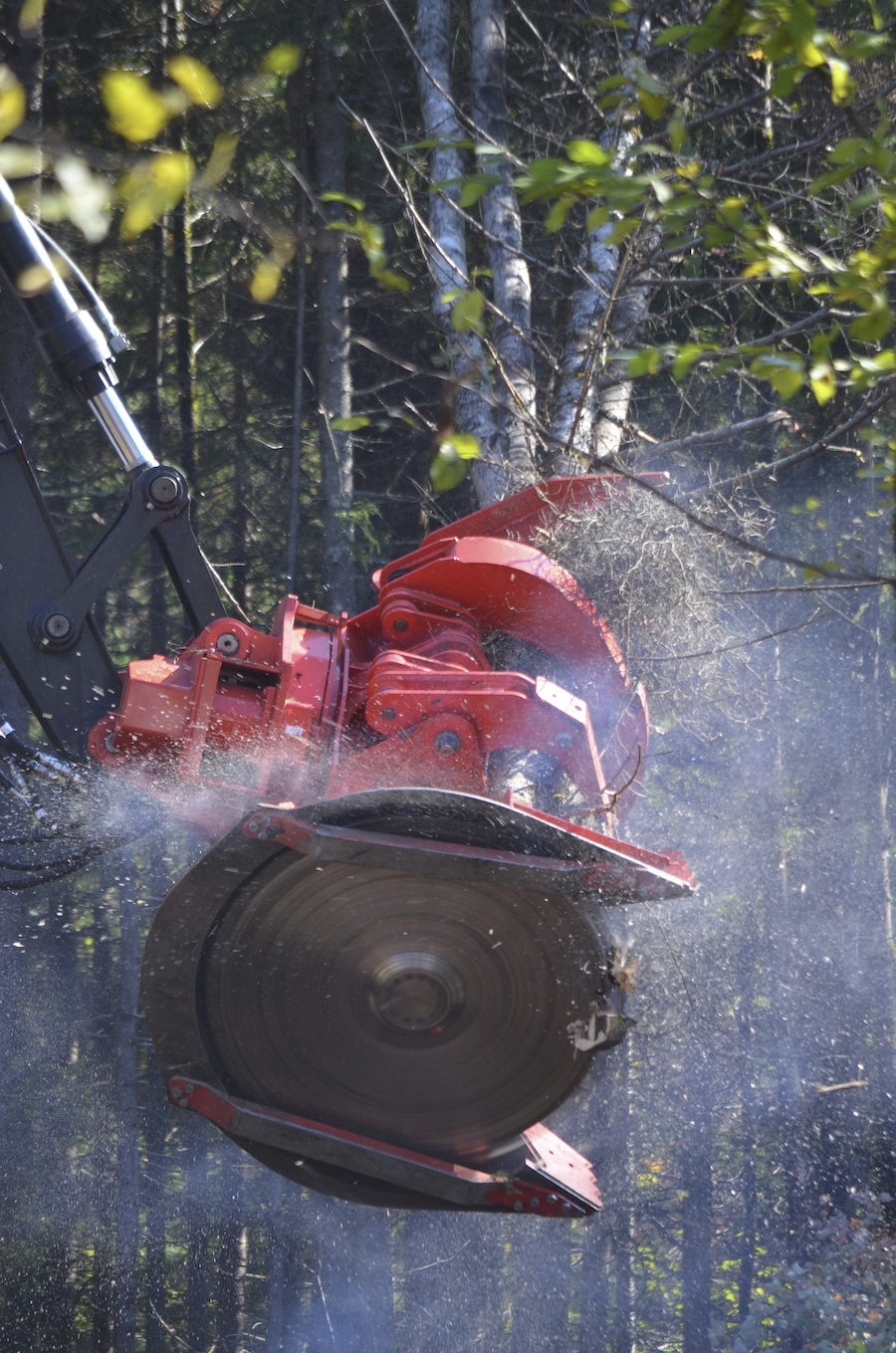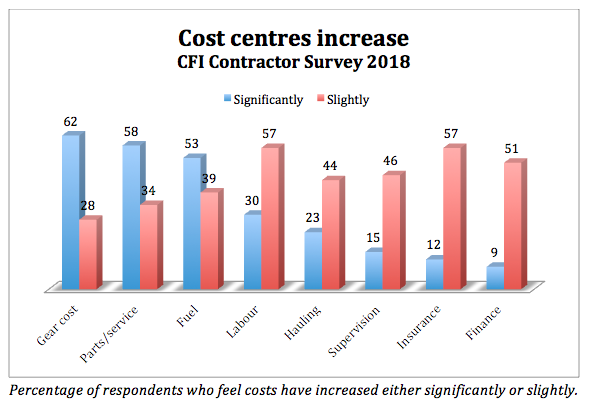
Features
Harvesting
Logging Profiles
Survey snippet 6: Operating costs continue to climb
Sept. 26, 2018 - While it’s impressive to see what the latest and greatest forestry machines can offer in terms of power, durability and operator comfort, inevitably, the better the machine the more you pay for it. And results from the 2018 CFI Contractor Survey show a majority of operators are keenly aware of the climbing costs.
September 26, 2018 By Maria Church

We asked loggers how much their main cost centres changed in the past three years. Well over half of the respondents say machinery purchase as well as parts and service and fuel have all increased significantly.
Respondents also rated the cost of labour, hauling, supervision, insurance and finance. All told, it appears every category of costs have increased for at least half of contractors. See a breakdown of results below.
These numbers are similar to what we saw in our 2016 Contractor Survey when asked the same question, with one notable exception: the cost of fuel has jumped over the past three years. Fifty-three per cent rate fuel costs as rising significantly, and another 39 per cent say it has increased slightly. In 2016 more than 50 per cent reported fuel costs had dropped, a welcome relief when almost every other cost had increased.
Higher pump prices may help explain why operators are seeing lower profit margins in 2018 than in 2016. If fuel costs continue to climb, the price of new, fuel-efficient machines may become more attractive as a long-term solution.
Regionally, fewer contractors in Quebec (38%) and Atlantic Canada (41%) reported significantly higher gear costs compared to B.C. Coast (83%), Interior (77%), Alberta (86%) and Ontario (83%), and fewer still in Atlantic Canada are concerned about fuel prices (22%).
Missed last week’s survey snippet? Find a collection of reports published to date here. Look for more news from the CFI 2018 Contractor Survey in our enews over the coming weeks, with a final digital report in December and a summary in the November/December print issue. Be sure to subscribe to our free enews to get all the latest industry news.
The survey was conducted in June 2018 by independent research firm Bramm & Associates, generating over 275 replies to a detailed list of questions. Respondents were distributed according to the geographic breakdown of the forest industry, with 40 per cent in Western Canada, 25 per cent in Quebec, and the rest found in Ontario, Atlantic Canada, and central Canada. Within B.C. responses were split between the BC coast and Interior. Many thanks to our sponsors for making the research possible – Hultdins and Tigercat.
Print this page